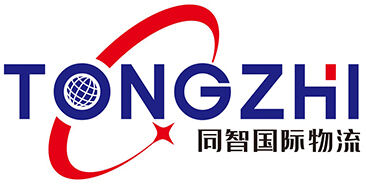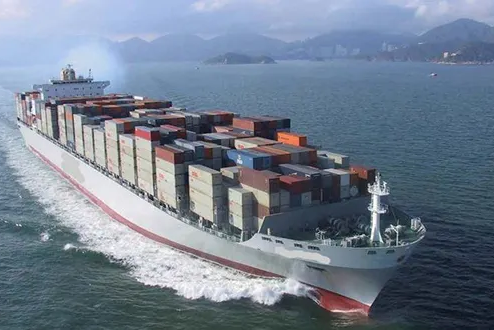Container shipping is the backbone of global trade, enabling the efficient and secure movement of goods across the world. With the ever-increasing demand for international trade, businesses must understand the nuances of container shipping to optimize their logistics operations. This article explores the best practices and key considerations for maximizing efficiency in container shipping.
Understanding Container Shipping
Container shipping involves transporting goods in large, standardized containers. These containers come in various sizes, with the most common being the 20-foot and 40-foot containers. The standardization allows for seamless transfer between ships, trucks, and trains, making it a versatile and efficient mode of transport.
Key Benefits of Container Shipping
Efficiency: Containers are designed for easy handling and stacking, which speeds up the loading and unloading process at ports. This efficiency translates to faster transit times and reduced costs.
Security: Goods transported in containers are less susceptible to damage and theft. The robust construction of containers provides excellent protection against the elements and potential pilferage.
Cost-Effectiveness: Container shipping is generally more cost-effective than other modes of transport, especially for long-distance international shipments. The ability to consolidate multiple shipments into one container further reduces costs.
Versatility: Containers can carry a wide variety of goods, from raw materials and machinery to perishable items and finished products. Specialized containers, such as refrigerated units (reefers), cater to specific needs like temperature control.
Best Practices for Container Shipping
Choose the Right Container Type
Selecting the appropriate container type is crucial for ensuring the safe and efficient transport of goods. Standard dry containers are suitable for most types of cargo, but businesses should consider specialized containers for specific needs:
Refrigerated Containers (Reefers): For perishable goods requiring temperature control.
Open-Top Containers: For oversized cargo that cannot fit into a standard container.
Flat Rack Containers: For heavy and bulky items like machinery and vehicles.
Optimize Container Utilization
Maximizing the use of available space within a container can significantly reduce shipping costs. Businesses should:
Properly Pack and Stack Goods: Ensure goods are packed tightly and securely to prevent shifting during transit.
Use Pallets and Skids: Facilitate easy handling and efficient use of space.
Balance Weight Distribution: Evenly distribute weight to maintain stability and prevent damage.
Implement Advanced Tracking Systems
Real-time tracking and monitoring of shipments provide valuable insights and enhance visibility throughout the shipping process. Advanced tracking systems offer:
Real-Time Location Updates: Keep businesses informed about the location and status of their shipments.
Condition Monitoring: Ensure that temperature-sensitive goods remain within the required range.
Predictive Analytics: Anticipate potential delays and optimize routes for faster delivery.
Ensure Compliance with Regulations
Compliance with international shipping regulations is essential to avoid delays and penalties. Businesses should:
Stay Informed About Trade Regulations: Keep up-to-date with import/export laws and customs requirements for each destination.
Prepare Accurate Documentation: Ensure all necessary documents, such as bills of lading, certificates of origin, and customs declarations, are correctly filled out and submitted on time.
Work with Experienced Customs Brokers: Facilitate smooth customs clearance and minimize the risk of compliance issues.
Leverage Technology for Enhanced Efficiency
Technology plays a critical role in optimizing container shipping operations. Businesses should adopt:
Shipping Management Software: Streamline booking, documentation, and tracking processes.
Automated Cargo Handling Systems: Speed up loading and unloading operations at ports.
Blockchain Technology: Enhance transparency and security in the supply chain by providing an immutable record of transactions and movements.
Key Considerations for Container Shipping
Cost Management
Shipping costs can significantly impact a business's bottom line. Key strategies for managing costs include:
Consolidating Shipments: Combine multiple shipments into one container to benefit from economies of scale.
Negotiating Contracts: Secure favorable rates and terms with shipping lines and freight forwarders.
Optimizing Routes: Select the most efficient and cost-effective routes to minimize transit times and reduce fuel consumption.
Risk Management
Managing risks associated with container shipping is essential to ensure the safe and timely delivery of goods. Consider the following:
Insurance Coverage: Protect against potential
losses due to damage, theft, or delays.
Contingency Planning: Develop plans to address unexpected disruptions, such as port strikes or natural disasters.
Regular Audits: Conduct audits of shipping processes and partners to identify and mitigate risks.
Sustainability Practices
Sustainability is becoming increasingly important in global logistics. Businesses can adopt eco-friendly practices such as:
Using Fuel-Efficient Vessels: Opt for shipping lines that use modern, fuel-efficient vessels to reduce carbon emissions.
Implementing Green Packaging Solutions: Use recyclable and biodegradable packaging materials to minimize environmental impact.
Offsetting Carbon Emissions: Participate in carbon offset programs to neutralize the environmental footprint of shipping activities.
Conclusion
Container shipping is a vital component of international trade, offering efficiency, security, and cost-effectiveness. By implementing best practices such as selecting the right container type, optimizing container utilization, leveraging advanced tracking systems, ensuring regulatory compliance, and embracing technology, businesses can maximize the benefits of container shipping. Additionally, managing costs, mitigating risks, and adopting sustainability practices are crucial for maintaining a competitive edge in the global market.







































